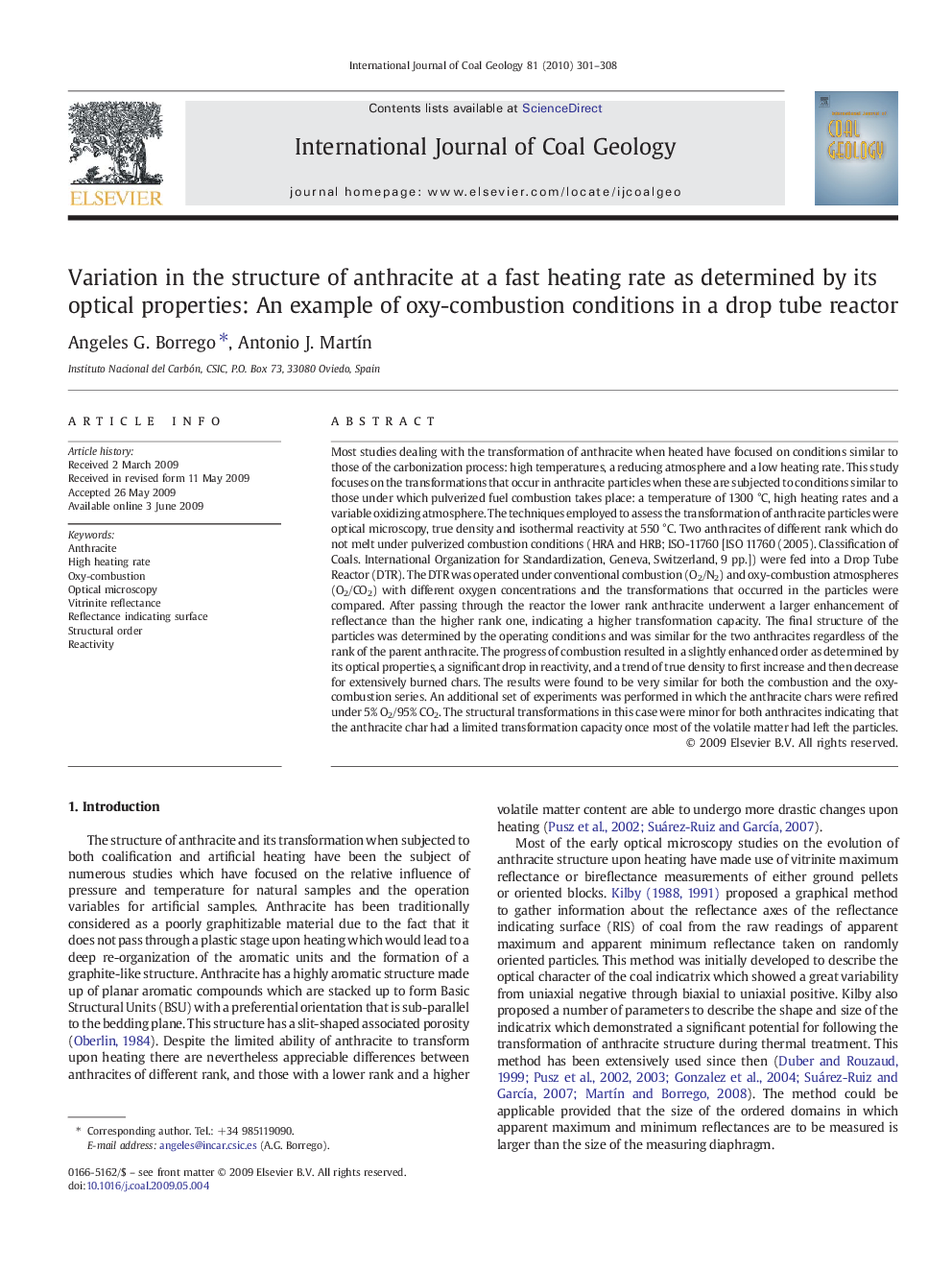| Article ID | Journal | Published Year | Pages | File Type |
|---|---|---|---|---|
| 1753806 | International Journal of Coal Geology | 2010 | 8 Pages |
Most studies dealing with the transformation of anthracite when heated have focused on conditions similar to those of the carbonization process: high temperatures, a reducing atmosphere and a low heating rate. This study focuses on the transformations that occur in anthracite particles when these are subjected to conditions similar to those under which pulverized fuel combustion takes place: a temperature of 1300 °C, high heating rates and a variable oxidizing atmosphere. The techniques employed to assess the transformation of anthracite particles were optical microscopy, true density and isothermal reactivity at 550 °C. Two anthracites of different rank which do not melt under pulverized combustion conditions (HRA and HRB; ISO-11760 [ISO 11760 (2005). Classification of Coals. International Organization for Standardization, Geneva, Switzerland, 9 pp.]) were fed into a Drop Tube Reactor (DTR). The DTR was operated under conventional combustion (O2/N2) and oxy-combustion atmospheres (O2/CO2) with different oxygen concentrations and the transformations that occurred in the particles were compared. After passing through the reactor the lower rank anthracite underwent a larger enhancement of reflectance than the higher rank one, indicating a higher transformation capacity. The final structure of the particles was determined by the operating conditions and was similar for the two anthracites regardless of the rank of the parent anthracite. The progress of combustion resulted in a slightly enhanced order as determined by its optical properties, a significant drop in reactivity, and a trend of true density to first increase and then decrease for extensively burned chars. The results were found to be very similar for both the combustion and the oxy-combustion series. An additional set of experiments was performed in which the anthracite chars were refired under 5% O2/95% CO2. The structural transformations in this case were minor for both anthracites indicating that the anthracite char had a limited transformation capacity once most of the volatile matter had left the particles.
